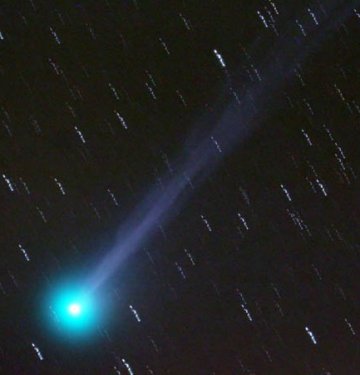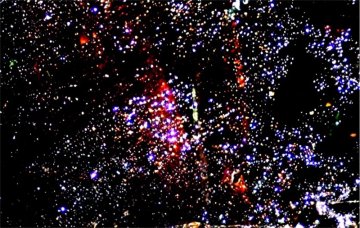 Autumn is here, and it's a wonderful time for stargazing. Find out what's up from Spaceweather PHONE.
Autumn is here, and it's a wonderful time for stargazing. Find out what's up from Spaceweather PHONE.
AURORA OUTLOOK: If you live in Scandinavia or Alaska, be alert for auroras on Oct. 27-28 when a minor solar wind stream is expected to brush past Earth.
BRIGHTENING COMET: "Comet Swan appears to have brightened," reports astrophotographer Pete Lawrence of Selsey, UK. "On the evening of Oct. 24th, I estimated it to be magnitude +4.6--a fairly easy naked eye comet!" He took this picture through his 3-inch telescope:

The comet has a sinuous tail as long as three full Moons and a beautiful emerald-green coma. Green is a sign that the comet contains cyanogen (CN), a poison gas, and diatomic carbon (C2)--both glow green when exposed to sunlight.
Ready to see for yourself? Look west after sunset. Comet Swan is about halfway up the sky gliding through the constellation Corona Borealis. [sky map] [ephemeris]
Stay tuned for more pictures!
NAME THAT CLUSTER: Can you identify this star cluster? Hint: It's very close to Earth. Scroll down for the answer.

It's a spider's web! California photographer Mila Zinkova explains: "The blue stars are dew drops hanging on the strands of a web and lit by the morning sun. The orange nebulas are autumn leaves. When I showed this underexposed picture to my husband, he said 'it looks like stars.'" Indeed it does. Compare Mila's picture to Hubble images of NGC 290 and the Quintuplet Cluster.
A slightly longer exposure reveals the strands of web and surrounding foilage: image. It really is a spider's creation--just call it "The Arachnid Cluster."
PS. Apologies for the trick question.

